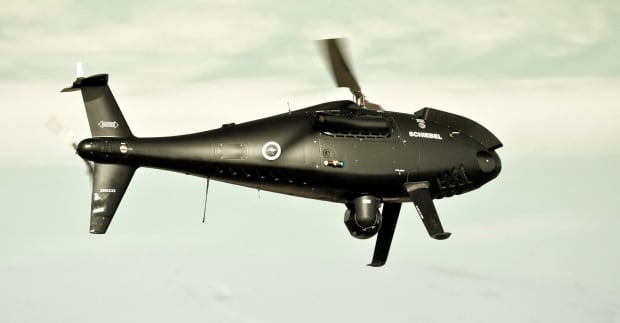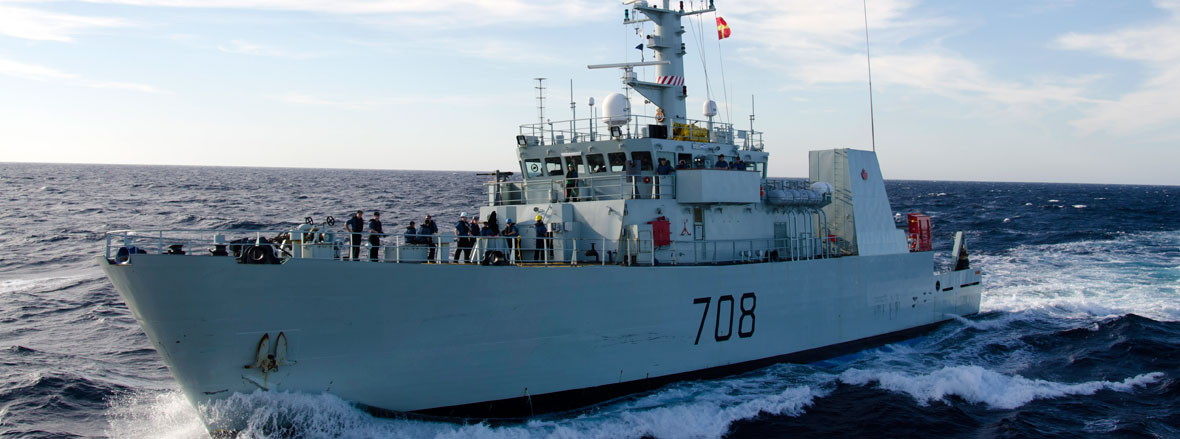Canada's fleet of frigates will have new airborne assets in the next decade, according to a report listing the advantages of unmanned airborne drones.
An unmanned aircraft system, or UAS, could be deployed from the deck of a ship to identify targets, do reconnaissance and gather intelligence in areas where human-piloted helicopters could not.
In hostile environments, drones offer an "inherent operational advantage," the Royal Canadian Navy said in documents published online this month.
Double the flight hours of a helicopter
The details of the plans were found in a government request for information from industries, commonly sought prior to issuing tenders for goods or services.
"An embarked Maritime Helicopter on a typical six month deployment would fly approximately 500 hours," the document said.
"The UAS could fly closer to 1,000 hours in that same period."
 |
| The new unmanned aircraft will be stored alongside the Maritime Helicopter that is deployed with each Canadian frigate. Here, a diagram included in the request for information is superimposed on an aerial image of HMCS Charlottetown. (Cpl. Blaine Sewell / DND) |
- Minimum flight time of six hours.
- Minimum range of 50 nautical miles from the ship (92.6 km).
- Ability to handle crosswind gusts up to 40 knots (74 km/h).
- Not require any launch or recovery apparatus.
- Vertical take-off and landing or rotary wing capability.
- Won't hamper helicopter operations
"The embarked UAS must ensure that its launch and recovery has minimal interference with the deck cycle of the embarked Maritime Helicopter," the document says.
 |
| The Schiebel S-100 unmanned aerial vehicle (Schiebel Group) |
The drones will not be weaponized, carry personnel or heavy payloads and will have a much shorter range than the helicopters.
Other navies have already deployed drones
Earlier this month, the Royal Australian Navy announced it would purchase a number of Camcopter S-100 unmanned vehicles from Austria's Schiebel Group.
 |
| Add captionThe Northrop Grumman TERN is designed to take-off vertically like a helicopter, then rotate in midair to fly like a fixed-wing plane. (Northrop Grumman) |
The same model has also been purchased by navies in Italy, Jordan, Libya, Russia and China.
The United States defense department is working with American company Northrop Grumman to develop another type of ship-based unmanned aircraft.
The Canadian military will continue gathering input from industry officials this year.
A request for proposals is scheduled to be issued in 2020 and a contract to supply the UAS awarded sometime in 2021.





